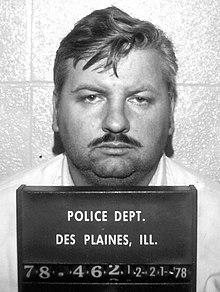The John Wayne Gacy trial remains one of the most notorious and memorable criminal cases in American history. Gacy, dubbed the “Killer Clown,” was convicted of a horrifying series of 33 murders between 1972 and 1978. This trial not only captured the nation’s attention, but also resulted in significant changes in the criminal justice system.
Gacy’s chilling tactics involved luring young men and boys, often under the guise of offering them work, befriending them, or dressing up as a clown to perform at events. He then tortured, sexually assaulted, and killed his victims, burying most of them in the crawl space beneath his house. It was these gruesome details that caused both media and public fascination throughout the trial, as well as a lingering curiosity about the case today.
However, the Gacy trial also exposed many flaws in the criminal justice system of the time. Issues such as ineffective police investigations, the mishandling of evidence, and an overreliance on confessions prompted changes in legal procedures and tactics. Ultimately, this case served as a catalyst for important advancements in the way our justice system operates today, while the incomprehensible acts of John Wayne Gacy continue to haunt our collective memory.
A Notorious Real-Life Horror
John Wayne Gacy’s trial remains one of the most gruesome and chilling chapters in American criminal history. A seemingly ordinary man with a disturbingly dark secret, Gacy was known in his community for appearances as Pogo the Clown. Unbeknownst to many, he would soon be revealed as a monstrous killer, responsible for the deaths of 33 young men.
In December 1978, the horrifying truth came to light when the search for a missing boy led authorities to Gacy’s home. There, police discovered a nightmare: a crawl space littered with human remains. As the evidence mounted, more and more victims were identified, propelling Gacy into the spotlight as a true-life horror story. His reign of terror would inspire numerous films, books, and documentaries for decades to come.
The trial itself, which began in February 1980, proved to be a spectacle with intense media coverage. Gacy’s defense team employed an unusual tactic: they argued that Gacy was insane, unable to control his murderous impulses. To support this claim, they presented unsettling details of Gacy’s double life, including disturbing accounts of torture and grisly murder. Alas, the jury wasn’t buying it, and after only two hours of deliberation, they found him guilty of 33 counts of murder.
Some key details from the trial include:
- Date: February 6, 1980
- Duration: 5 weeks
- Number of witnesses: over 100
- Verdict: Guilty
Here are some crucial points regarding Gacy’s modus operandi:
- He targeted young men and boys
- His preferred method was strangulation
- Victim count: 33 confirmed, possibly more
- Narcotic cocktails were sometimes used to subdue victims
- Many bodies were found in Gacy’s crawl space or buried beneath his home
In a final twist of irony, Gacy’s own artwork would become sought-after collectibles in the dark world of murderabilia. Many of his paintings featured disturbing images or clown-related themes, a vivid reminder of his sinister alter ego.
Visiting MurderArchives.org for more on this case and other stories of real-life horror, we’ll continue to explore the darkest secrets and events from America’s criminal past. Step into the shadows with us and discover the true tales of blood and terror lurking beneath the surface.
Victims and Arrest
The cruel deeds of John Wayne Gacy, also known as the Killer Clown, sent shockwaves through the nation. A respected member of the community on the surface, Gacy led a double life, subjecting innocent victims to the horror of his crimes. Here, we’ll delve into the key specifics surrounding Gacy’s victims and his eventual arrest.
It’s believed that Gacy was responsible for the brutal murders of 33 young men and boys between 1972 and 1978. The ages of his victims ranged from 14 to 21. Noteworthy traits of the case include:
- Gacy’s preference for teenage boys and young men
- The luring of victims to his house under false pretenses
- Both strangulation and suffocation as methods of murder
John Wayne Gacy’s arrest took place on December 21, 1978, after investigators uncovered a considerable amount of evidence. Crucial details that led to his arrest include:
- Discovery of human remains in Gacy’s crawl space
- Suspicious odors reported by Gacy’s employees
- Gacy’s prior weapons charges, which raised investigators’ suspicion
| Year | Number of Victims |
|---|---|
| 1972 | 1 |
| 1973 | 1 |
| 1974 | 2 |
| 1975 | 9 |
| 1976 | 4 |
| 1977 | 6 |
| 1978 | 10 |
As shown in the table above, the frequency of Gacy’s heinous crimes peaked in 1975 and 1978. The relentless nature of the murders and the overwhelming evidence against Gacy led to his swift apprehension.

There were multiple factors in Gacy’s eventual demise. The disappearance of Robert Piest, a 15-year-old boy, was the final straw that led authorities to Gacy’s home. Earlier events that brought him under suspicion involved:
- The assault of a teen, David Cram, who managed to escape and report the attack
- The termination of a pharmacy contract with Gacy, which alerted authorities to his felony record
The John Wayne Gacy trial remains one of the most infamous in American history. Its unique mixture of horror, intrigue, and deception grips all who delve into the case. Stay tuned for more chilling insights on this notorious criminal at MurderArchives.org.
The Unfolding of the Court Proceedings
We’ll begin by delving into the key moments of the John Wayne Gacy trial that captivated our nation. During the trial, it became increasingly clear that Gacy was responsible for the grisly murders of at least 33 young men and boys.
Jury Selection
Since this case stirred up much public interest, finding an impartial jury proved to be challenging. The jury selection process included the examination of hundreds of potential jurors over a period of 10 days. Eventually, the jury consisted of 5 women and 7 men who would determine Gacy’s fate.
Prosecution’s Evidence and Testimonies
The prosecution built their case on a mountain of evidence, such as:
- Police interviews with Gacy, where he confessed to some murders.
- Physical evidence from the crime scenes, including personal items belonging to the victims and the infamous crawlspace of Gacy’s house, where many bodies were discovered.
- Witnesses who claimed to see Gacy with some of the victims.
Furthermore, the prosecution presented testimonies from:
- Surviving victims: Those who managed to escape Gacy’s clutches provided chilling accounts of their traumatic experiences.
- Jeffrey Rignall: A key witness, Rignall recounted his terrifying encounter with Gacy, which included kidnapping, torture, and sexual assault.
All this evidence and testimony painted a horrifying picture of Gacy’s brutal crimes.
Defense’s Strategy
Gacy’s defense team opted for the insanity plea. They argued that Gacy suffered from multiple personality disorder — a condition that rendered him incapable of understanding the nature of his actions. In an attempt to support this claim, they called several mental health experts to testify.
Verdict and Sentencing
Despite the defense’s efforts, the jury was far from convinced. They deliberated for less than two hours before reaching the verdict of guilty on 33 counts of murder, in addition to guilty verdicts for other charges such as kidnapping and sexual assault.
The sentencing phase of the trial commenced soon after the verdict, lasting two days. On March 13, 1980, Gacy was sentenced to death, a sentence carried out on May 10, 1994. Throughout the years leading to his execution, he continued to assert his innocence and challenged various aspects of the investigation.
The John Wayne Gacy trial remains a chilling reminder of the evil that can lurk beneath a seemingly ordinary facade. We hope this overview of the court proceedings provides a useful snapshot of what transpired during this infamous trial.

Impact on the Community and Nation
John Wayne Gacy’s trial had a significant impact on both the local community and the nation as a whole. The horrifying nature of his crimes, along with the sheer number of victims, shocked and saddened many.
Community reactions during and after the trial were varied. Some people felt relief that Gacy had been caught, while others were angered by the failures in the investigation that allowed him to continue his murderous spree. Gacy’s conviction and subsequent execution brought some closure to the families of his victims, but many still mourn the loss of their loved ones to this day. Some key community impacts include:
- A renewed sense of caution and wariness towards strangers
- Heightened concerns about sex offenders in neighborhoods
- Calls for improvements in missing persons investigations
The trial also had a lasting effect on the entire country. John Wayne Gacy’s heinous acts caused a dramatic shift in the way people perceived serial killers. Before Gacy, many Americans believed that such criminals only operated in remote areas, targeting vulnerable populations. Gacy’s crimes, which took place in a suburban setting, dispelled this notion and forced people to confront the reality that serial killers could be anywhere. Some nationwide impacts of the trial are:
- Changes in law enforcement practices, including more extensive background checks and the implementation of new investigative techniques
- The establishment of missing children databases to help locate and identify victims
- The introduction of community notification laws for convicted sex offenders
| Impact | Outcome |
|---|---|
| Law enforcement practices | Improved background checks and new investigative techniques |
| Missing children databases | Better victim identification and location |
| Community notification laws | Increased awareness and prevention of sex offender recidivism |
It’s important to remember that Gacy’s trial and the gruesome details of his crimes not only fascinated but also terrified the public. It led to an increased awareness of the dangers lurking in everyday life, resulting in parents becoming more protective of their children, and communities becoming more vigilant. True crime enthusiasts and investigators alike continue to study the case to better understand the mind of a serial killer and learn from the mistakes made during the investigation.
The Trial’s Aftermath
The John Wayne Gacy trial left a lasting impact on society and the families of the victims. The aftermath of the trial led to considerable changes in the criminal justice system, as well as increased awareness about serial killings in the United States.
Legal Implications
Gacy’s trial resulted in a number of changes within the legal system:
- Introduction of new legislation: After Gacy’s conviction, many states reconsidered their capital punishment laws, leading to the reinstatement or reinforcement of the death penalty in response to gruesome crimes like Gacy’s.
- Enhanced forensic techniques: Criminal investigators gained better understanding on how to employ forensic techniques and collect evidence in serial killer cases. This increased the focus on DNA and other scientific methods to improve accuracy and efficiency.
Changes in the Public Perception
The public’s perception of serial killers also shifted as a result of Gacy’s trial:
- Increased awareness: The trial brought national attention to the horrifying realities of serial killings, giving people a better understanding of the warning signs and the importance of reporting suspicious behavior.
- The influence on popular culture: Gacy’s case inspired numerous books, movies, and documentaries, further ingraining the story into American culture and demonstrating the public’s fascination with true crime stories.
Impact on the Victim’s Families
For the families of Gacy’s victims, the trial and its aftermath were a mix of emotions:
- Grieving and closure: Many families finally had a sense of closure with Gacy’s conviction, allowing them to grieve and honor the memory of their loved ones.
- Enduring pain: While the trial resolved certain aspects, the pain inflicted by Gacy still lingers in the hearts of the victims’ families to this day.
At MurderArchives.org, we continue to dive into cold cases, crime, and mystery stories like the John Wayne Gacy trial. Gacy’s trial is viewed as a pivotal moment in American criminal justice history, proving how one heinous act can lead to significant changes in perception, legislation, and investigative methods. The legacy of the trial’s aftermath reminds us of our responsibility to remain vigilant and seek justice for those affected by such devastating crimes.

Owner & entrepreneur with a passion for murder mystery! Seriously, who doesn’t love murder mystery?
Chris is a proud member of the American Medical Writer’s Association (AMWA), the International Society for Medical Publication Professionals (ISMPP), the National Association of Science Writers (NASW), the Council of Science Editors, the Author’s Guild, and the Editorial Freelance Association (EFA).

